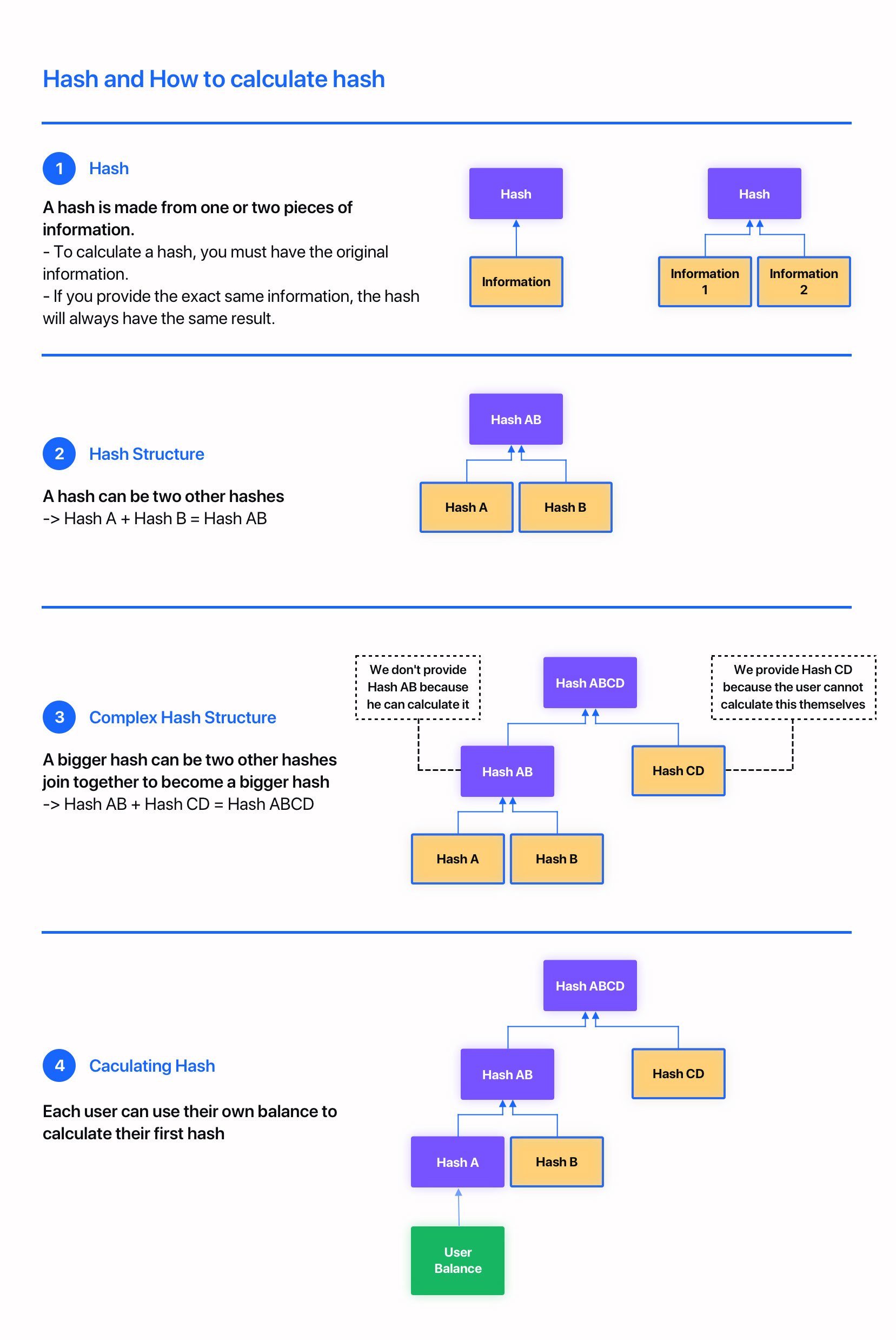Hash Functions
What is a hash function?
A hash function is a mathematical function that takes an input of any size and produces an output of a fixed size. This output is called a hash value, or simply a hash. Hash functions are used in a variety of applications, including Merkle trees.
Example of hash function:
The input to the hash function is a string of text, such as "This is some data." The hash function then takes this string and performs a series of mathematical operations on it. These operations are designed to be irreversible, so it is impossible to go back from the hash value to the original string.
The output of the hash function is a hash value, which is a string of hexadecimal digits. The hash value is always the same length, regardless of the length of the input string. In this example, the hash value is "08c4106f0396c0c5acd5088fa1a5b8688f5cf3408786eae9f72093ac1185d74d".
The hash value is unique to the input string. This means that no two different input strings will produce the same hash value. This property of hash functions is what makes them useful for verifying the integrity of data.
For example, if you have a file that you want to verify, you can calculate the hash value of the file and store it along with the file. When you download the file, you can calculate the hash value of the downloaded file and compare it to the hash value that is stored with the file. If the hashes match, then the file has not been tampered with.
Hash functions are a powerful tool for verifying the integrity of data. They are efficient, secure, and easy to use. As a result, they are used in a variety of applications, such as Merkle trees, digital signatures, and password hashing.
Hash functions are a critical part of Merkle trees. They allow Merkle trees to be efficient and secure. Hash functions are also used in other applications, such as digital signatures and password hashing.

![Hash_and_How_to_calculate_hash_-_JP[1][1].png](https://images.squarespace-cdn.com/content/v1/6486ddc4fb42f33c24a2bac9/1694507348339-0XZJ3EGZRO136IXS8Y43/Hash_and_How_to_calculate_hash_-_JP%5B1%5D%5B1%5D.png)
